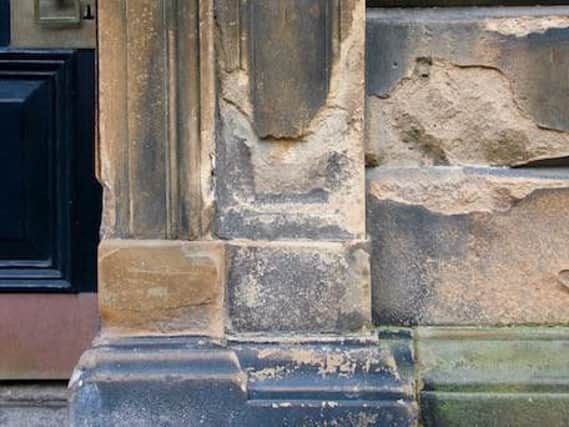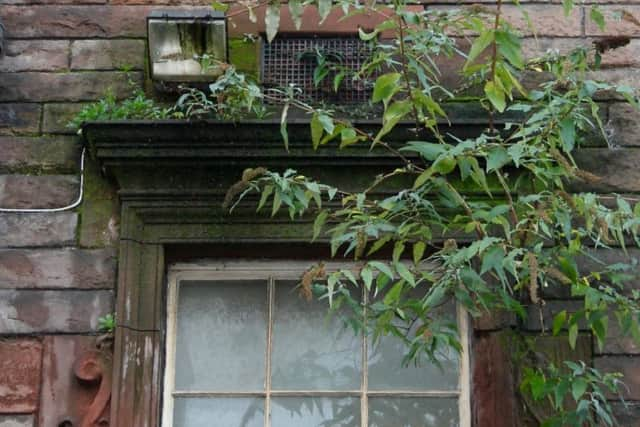Probe into historic buildings reveals new threat to Edinburgh's world heritage site


A survey of 200 different sites found that nearly three quarters of buildings in key Old Town thoroughfares were in need of repair.
Experts have raised concerns about a growing “complacency and lack of attention” over historic buildings that could lead to them becoming decaying and dangerous unless problems are tackled.
Advertisement
Hide AdAdvertisement
Hide AdThe Edinburgh World Heritage (EWH) trust, which instigated the research, says “bits will start falling off buildings” if the decline is allowed to “accelerate.”


It has described the growing crisis as a “phantom menace” which has crept up on the city and warned that it risks damaging the city’s long-term tourism prospects.
EWH has joined forces with the Society for the Protection of Ancient Buildings to launch a new campaign urging homeowners to take more responsibility for historic properties in Edinburgh.
A special event was held at the charity’s headquarters at Bakehouse Close, just off the Canongate, to help promote possible grants and highlight a “maintenance checklist.”
Property owners are being urged to carry out annual inspections of their roofs, gutters, external walls, woodwork, paintwork and heating systems.


EWH director Adam Wilkinson wants to secure funding to set up its own maintenance service to halt the decline, after serious problems were uncovered in the majority of properties on the Canongate, the High Street, South Bridge and Nicolson Street.
The charity, which monitors the world heritage site on behalf of UNESCO, now plans to roll out the research across the city centre.
It has blamed an increase in the number of people renting out historic properties and the number of buildings with multiple owners for the build-up of problems, including damaged stonework, corroded iron works, poorly-maintained or rotten window frames, inappropriate vegetation and damaged roofs. The research found climate change was also a factor in the decline of buildings, due to recent increases in average rainfall and temperature levels.
Advertisement
Hide AdAdvertisement
Hide AdHistoric tenement buildings make up around three quarters of buildings in the Old and New Towns, designated a world heritage site by UNESCO in 1995.


The dossier on the Old Town tenements has been released months after UNESCO raised concerns about the stewardship of the world heritage site, saying it appeared as if the balanace had tipped away in the city from conservation towards “inappropriate development.”
Mr Wilkinson said: “We often think inappropriate new development is the major threat to our world heritage site but the complacency that leads to poor building maintenance is an equal threat.
“People are spending all this money on their property but are not treating it like they would a car, which they take in to get serviced every year. They sometimes skip out the basics and do not maintain it to even half the standard that they should. But this is a bit like a phantom menace in the way that it creeps up on you. It’s almost like cancer.
“We need to raise awareness of the problems and help people understand how they can do this kind of work. It would be brilliant if we could set up a maintenance service of some sort. There are a number of challenges with that, not least finding public money to do it.


“At the moment, it supports the repair of buildings which have not been maintained. We need to change the mentality the whole way through government to think more about long-term maintenance. At present the mentality is ‘if you’ve got a problem, let’s fix it’ rather than trying to avoid future problems. Even though we know this work needs doing, the demand is not there, that is the problem.”
Fiona McDonald, conservation architect at Edinburgh World Heritage, added: “This is very much a work in progress. We’ve been looking at each building and identifying their condition. If nothing is done to them there will be accelerated delay and bits will start falling off buildings. Tourists won’t want to come here because it won’t be safe.
“Increased rainfall levels mean that vegetation is growing quickly and there is more of it. If it doesn’t get cleaned out quickly it will build up. It’s also really important to keep your property wind and watertight. If your roof is not secure and there is water coming in it doesn’t matter what you do inside, it’s going to be damaged.”
Advertisement
Hide AdAdvertisement
Hide AdArchitect Lucy Stewart, a scholar with SPAB, said: “We’re carrying out our own research across the city at the moment to try to find out how knows about property maintenance, what sort of maintenance they do to their property and how easy it is to do with their neighbours.
“One of the biggest problems with people living in tenements is they often don’t know their neighbours. The owner-occupier situation is very problematic and if you have 12 different ownerships in one stairwell that’s a lot of people to to get to agreed and organise to do something.
“There is a big social responsibility on people because the city is such a tourist magnet. If these properties fall into decline through complacency and people thinking it is too difficult that will fade away.”
Ian Perry, the city council’s planning convenor, said the authority had begun consulting on whether new legislation was needed to help speed up repairs in share tenement blocks.
He added: “Our world heritage site is of crucial importance to the future vision and development of the city. We would agree owners need to take full responsibility for their buildings.
“Where this fails, we’re currently developing a new service to help those living in tenement blocks to get together with their neighbours to carry out necessary maintenance and repairs.”